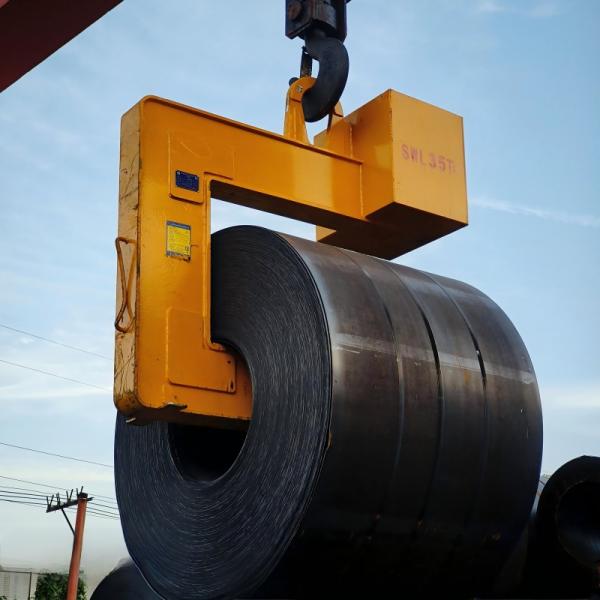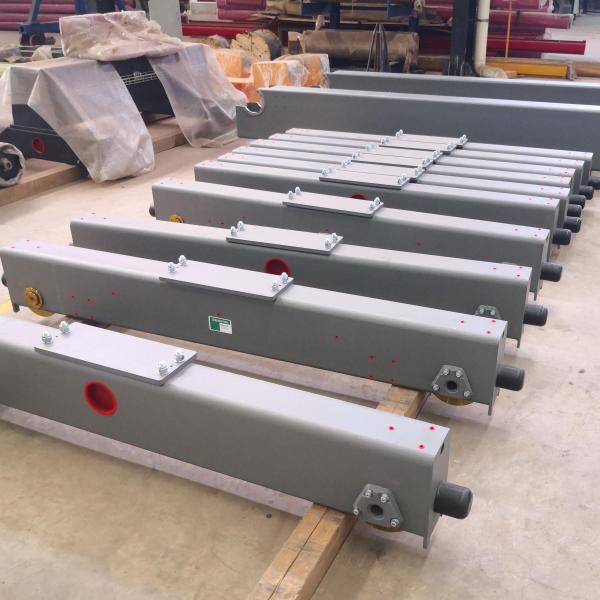The selection standards and characteristics of crane gear couplings are crucial for ensuring the safe, efficient, and reliable operation of the crane system. Gear couplings primarily function to transmit rotational power between shafts while compensating for misalignments and reducing vibrations. Selecting the appropriate gear coupling is essential to prevent system failures and maximize performance. Below are the selection standards and characteristics for crane gear couplings:
1. crane gear coupling Rated Torque
- Selection Standard: The rated torque of the gear coupling should match the maximum torque transmitted during crane operations. It must be selected based on the crane’s motor power, the mechanical load it is required to lift, and the operating conditions.
- Characteristics: If the coupling’s rated torque is insufficient, it may fail prematurely. Conversely, an oversized coupling could result in unnecessary weight and cost. Therefore, it is essential to select a coupling whose torque rating aligns with the actual operational requirements, ensuring performance without excess.
2. Misalignment Tolerance
- Selection Standard: The gear coupling should be able to accommodate angular, radial, and axial misalignments between the connected shafts. The selection should consider the maximum allowable angular deviation (usually in degrees) and axial displacement.
- Characteristics: A coupling with a high misalignment tolerance can handle shaft misalignments caused by thermal expansion, mechanical wear, or alignment inaccuracies. This flexibility ensures smooth operation and reduces the risk of damage to the equipment.
3. crane gear coupling Material Selection
- Selection Standard: Gear couplings should be made from materials that provide high strength, wear resistance, and corrosion resistance. Common materials include high-carbon steel, alloy steel, and stainless steel, with the choice depending on the operating environment (e.g., high temperatures, corrosive conditions).
- Characteristics: High-carbon steel and alloy steel are ideal for high-strength applications, while stainless steel is preferred for environments prone to corrosion (such as chemical plants or marine environments). Selecting the right material ensures that the coupling performs well under expected loads without premature wear or corrosion.
4. Gear Design and Tooth Profile
- Selection Standard: The design of the coupling gears should allow for efficient torque transmission and high load capacity. The gear teeth are typically designed as either straight or helical. Helical gears provide smoother operation and higher torque transmission capabilities.
- Characteristics: Helical gears offer smoother engagement and higher load capacity, reducing noise and vibration. Straight gears are simpler and more cost-effective but are better suited for low-speed applications. The selection depends on the operational speed and torque requirements.
5. Lubrication and Maintenance
- Selection Standard: The coupling should be designed for easy lubrication and maintenance. Lubrication is critical to reduce wear on the gears and prevent overheating. The coupling should either have a grease fitting or be sealed for life, depending on the application.
- Characteristics: Proper lubrication significantly reduces friction and extends the coupling’s lifespan. Sealed lubrication systems require less maintenance but may have limitations in extreme conditions. Regular lubrication is crucial for high-load, high-speed applications to prevent overheating and failure.
6. Size and Weight
- Selection Standard: The size of the coupling should match the shaft diameter and the available installation space, while maintaining the required strength and functionality.
- Characteristics: The coupling should neither be too large nor too small for the shaft. Mismatched sizes can lead to inefficiencies or installation difficulties. Additionally, the weight of the coupling can affect the overall system, and excessive weight may reduce the crane’s performance.
7. Shock Load and Vibration Resistance
- Selection Standard: Crane systems often experience shock loads and vibrations, particularly during lifting, lowering, or sudden starts and stops. Gear couplings should be designed to withstand these stresses.
- Characteristics: A coupling with good shock load and vibration resistance ensures smooth operation and helps prevent premature failure. Special materials or designs (such as elastomeric or dampened couplings) can further reduce vibrations and protect both the coupling and the connected equipment.
8. crane gear coupling Safety Factor
- Selection Standard: The safety factor for the gear coupling should typically be 1.5 to 2 times the maximum operating torque. This ensures the coupling can withstand temporary overloads or unexpected forces without failure.
- Characteristics: A higher safety factor increases the coupling’s reliability and prevents unexpected breakdowns. While it may increase the size and cost of the coupling, it provides a crucial safety margin for continuous operation.
9. Environmental Considerations
- Selection Standard: Depending on the crane’s operating environment, the gear coupling may require additional features such as corrosion resistance, dust seals, or protection against high temperatures.
- Characteristics: Gear couplings exposed to corrosive environments (such as marine or chemical plants) need special coatings or materials to resist corrosion. Those operating in high-temperature environments may require heat-resistant materials or lubrication systems to prevent overheating.
10. Compatibility with Other Components
- Selection Standard: The gear coupling must be compatible with other components in the crane system, including shafts, bearings, and motors. It should fit precisely to ensure proper power transmission and prevent wear.
- Characteristics: Ensuring compatibility with other mechanical components guarantees the efficiency and longevity of the entire crane system. Misalignment or incompatibility between the coupling and other parts can increase wear, reduce efficiency, and lead to system failure.
11. Compliance with Standards
- Selection Standard: The gear coupling should comply with relevant national and international standards, such as ISO 9001 (for quality management) or AGMA (American Gear Manufacturers Association) standards. These standards ensure the coupling’s quality and performance.
- Characteristics: Couplings that meet these standards have undergone rigorous testing and certification, ensuring that they meet industry requirements for strength, durability, and performance, thus guaranteeing the safety and reliability of the crane system.
crane gear coupling Summary:
In conclusion, selecting the right crane gear coupling involves considering several factors, such as rated torque, misalignment tolerance, material choice, design, lubrication and maintenance needs, and environmental conditions. By carefully evaluating these factors, one can ensure that the coupling transmits torque efficiently and reliably, reduces system failures, and improves the crane’s operational performance and safety. This careful selection ultimately extends the service life of both the coupling and the entire crane system.









